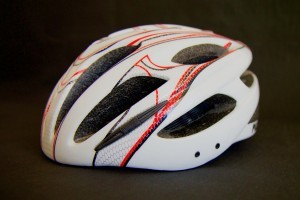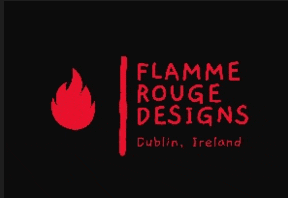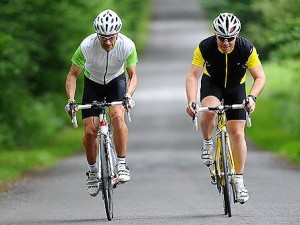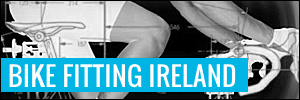So, you’ve bought the bike and all the gear, you’ve achieved a reasonable level of fitness and competence on the bike and the saddle has finally moulded itself to the contours of your butt. Now you want to take it to the next level. Maybe it’s time to enter your first sportive.
A sportive is an organised (some more organised than others!) cycling event where the objective is to finish the course. Some are timed events, some are not, but of course you can set yourself personal time targets. The distance to be covered can vary and many sportive events have multiple distances to suit all levels of cyclist. The main thing is it should be fun and enjoyable, whether your objective is to meet other cyclists, enjoy the scenery or fulfil a personal goal.
Like so many things, preparation is the key to a successful and enjoyable experience. Don’t underestimate the difficulty of the event you are undertaking, check out the route before you enter to see the difficulty of climbs etc. So, assuming that you have adequate training done, let’s focus on event day itself and how best to get through the event with maximum enjoyment and comfort.
Bike For longer distances, a road bike is strongly recommended. They are lighter and, over long distances, more comfortable, as they offer a number of different sitting positions. Make sure your bike is roadworthy and have it serviced well in advance, if necessary. On the day, make sure everything is well lubricated and the tyres are pumped. Check you have spare tubes, tyre levers and a puncture repair kit in your saddle bag. Don’t forget a pump and for longer rides I would recommend you should have two bottle cages and bottles.
Food A big breakfast on the day of the event is not optional, it is essential. Complex carbohydrates are best, such as porridge, Weetabix or wholemeal toast. Personally, I find tinned rice pudding, such as Ambrosia, is great. It’s quick and convenient to prepare and rice is broken down slowly giving a gradual energy release, perfect for a long event. No matter what you have for breakfast, after about three hours riding your stores of energy reserves will be depleted. During longer rides, it is vitally important that you eat as you go on the bike. Failure to do so will result in what marathon runners call ‘hitting the wall’. In cycling it’s called ‘the bonk’ or ‘the hunger knock’. Simply put, what happens is that your muscles run out of fuel to burn, leading to extreme fatigue. Your concentration could be affected too, as your brain also requires fuel to function properly. Don’t wait until you are hungry; eat small amounts often as you cycle along. Suitable high energy foods to carry in your pocket include fig rolls, bananas and breakfast cereal bars. 
Energy Gels, energy bars and energy drinks are advisable on longer trips i.e. more than three hours. Sorry, but chocolate bars are not ideal as the carbohydrates just give you an instant rush, rather than a slow more gradual release of energy, which is what is required in an endurance event. Most sportive events have food stops, but don’t depend solely on these. If you don’t carry snacks with you, at least bring some money so you can stop at a shop along the route in case of food emergency.
Drinks Make sure you are well hydrated before the start of the event as dehydration can set in very quickly, especially on warm days. Alcohol should be avoided the night before because of its dehydrating effects. Start sipping from your water bottle as soon as the cycling starts. Don’t wait until you feel thirsty, as by then it’s probably too late and it’s hard to recover mid ride once dehydration has set in. The symptoms are similar to the ‘bonk’ mentioned above. On trips likely to last longer than three hours, energy drinks are suitable but are not really necessary on shorter trips. Again, don’t depend on the event water stops, as I have know them to run out in the past.
Carefully read the directions and instruction from the organisers. This will give you your starting time and everything else you need to know about the event, such as the locations of water stops etc. Arrive at the start early, as parking can be at a premium and it may take longer than you expect to find a parking spot.
 A helmet is almost always compulsory during events and although most events have mechanical backup, you need to be able to perform small repairs, such as punctures, yourself. Try and carry everything in your pockets and saddle bag, as a backpack is not very comfortable over longer distances.
A helmet is almost always compulsory during events and although most events have mechanical backup, you need to be able to perform small repairs, such as punctures, yourself. Try and carry everything in your pockets and saddle bag, as a backpack is not very comfortable over longer distances.
Save Energy The most energy efficient way to cycle is in a pack with other riders. The energy saved by cycling behind another cyclist or in a pack can be as much as 20-25% If you are nervous in a pack stay with a small group and try and learn from others. Cyclists in a bunch have a recognised set of hand signals and shouted warnings (potholes, cars approaching etc.) that are handy to know. Don’t be afraid to ask other, more experienced riders if you’re not sure what they mean. Hold your line in a pack, don’t brake suddenly unless you have to and communicate with those around you. Look out for yourself and others. Watch the road ahead and not the shapely bum of the person in front!
Remember to pace yourself, or as Sean Kelly would say, ‘make the calculation’. It’s all too easy to take off like a rocket, thinking ‘Ah sure, this is not so hard,’ only to suffer later on. If you are riding with a pack, make sure their pace is not too high for you; it’s easy to get sucked in when the adrenaline is in full flow
. When you stop for a rest, don’t stop for too long. Personally speaking, if I stop for more than 15 minutes, my muscles get cold and my legs stiffen up. Then again, that could just be the advancing years!
Most of all, enjoy it, stay safe and have fun!







